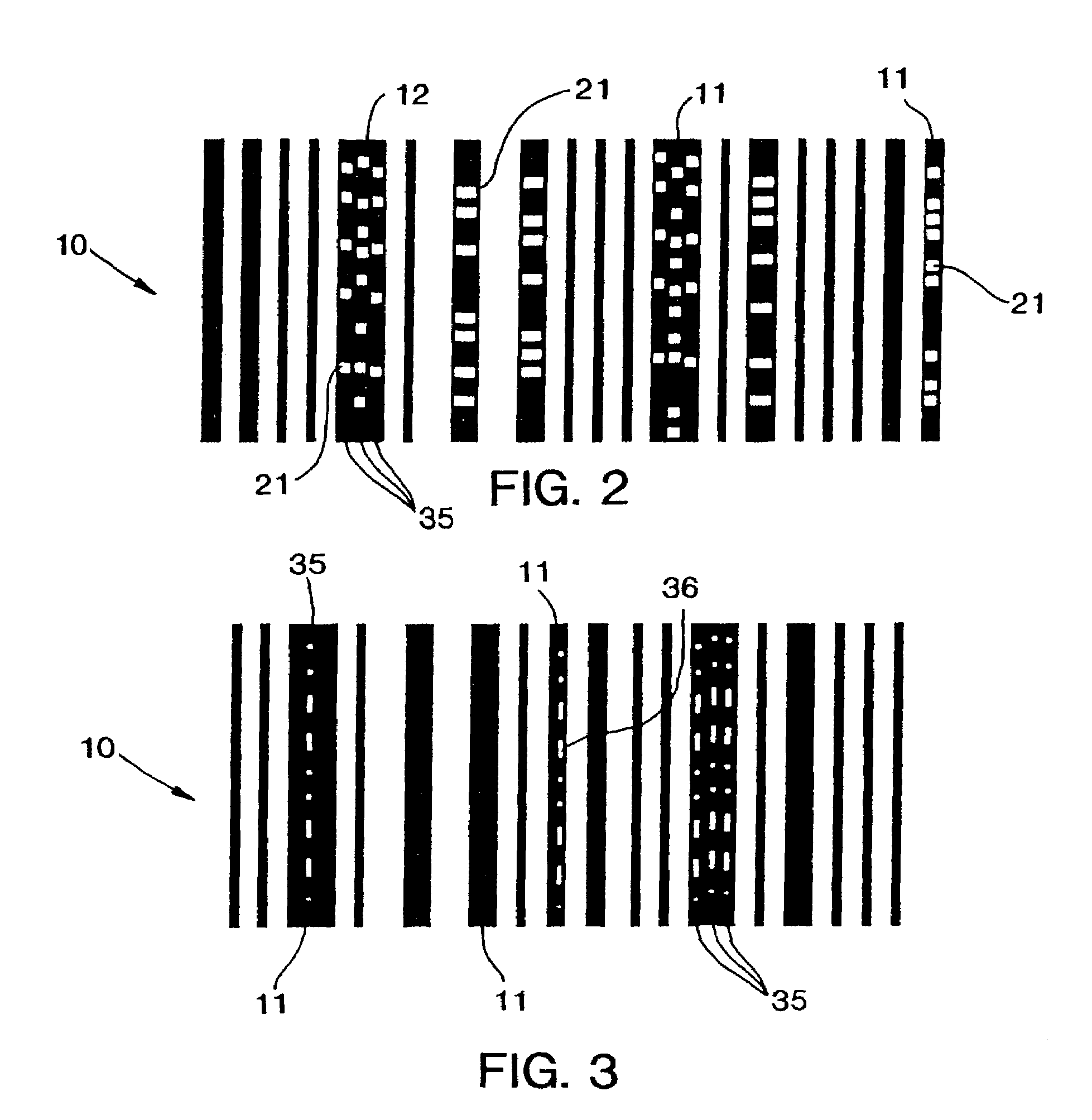Method and apparatus for encoding and decoding bar codes with primary and secondary information and method of using such bar codes
a bar code and information technology, applied in the field of bar code systems, can solve the problems of not being able to provide such product-specific, process-specific tasks, and generalization, and conventional bar codes have severe spatial limitations
- Summary
- Abstract
- Description
- Claims
- Application Information
AI Technical Summary
Benefits of technology
Problems solved by technology
Method used
Image
Examples
Embodiment Construction
[0036]The present invention of this application is better understood in conjunction with the following Figures and detailed Specification of the preferred embodiment. The various hardware and software elements used to carry out the invention is illustrated in the attached drawings in the form of schematic and block diagrams and flow charts. For simplicity and brevity, the Figures, and Specification do not address in detail features that are well known in the prior art, such as the literature listed in the Background of the Invention above and certain additional prior art which is discussed in the Detailed Description which follows. However, to assure an adequate disclosure, the specification hereby incorporates by reference each and every patent and other publication referenced above in the Background of the Invention or mentioned in the Detailed Description below.
A. The Parent Application
1. Primary and Secondary Information in a Single Bar Code
[0037]In parent application, Ser. No. ...
PUM
 Login to View More
Login to View More Abstract
Description
Claims
Application Information
 Login to View More
Login to View More - R&D
- Intellectual Property
- Life Sciences
- Materials
- Tech Scout
- Unparalleled Data Quality
- Higher Quality Content
- 60% Fewer Hallucinations
Browse by: Latest US Patents, China's latest patents, Technical Efficacy Thesaurus, Application Domain, Technology Topic, Popular Technical Reports.
© 2025 PatSnap. All rights reserved.Legal|Privacy policy|Modern Slavery Act Transparency Statement|Sitemap|About US| Contact US: help@patsnap.com



